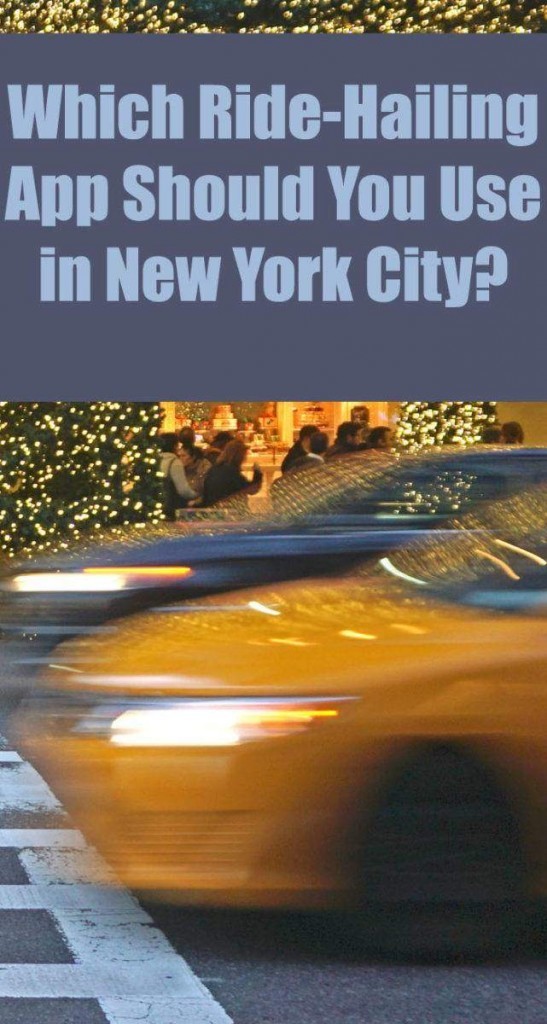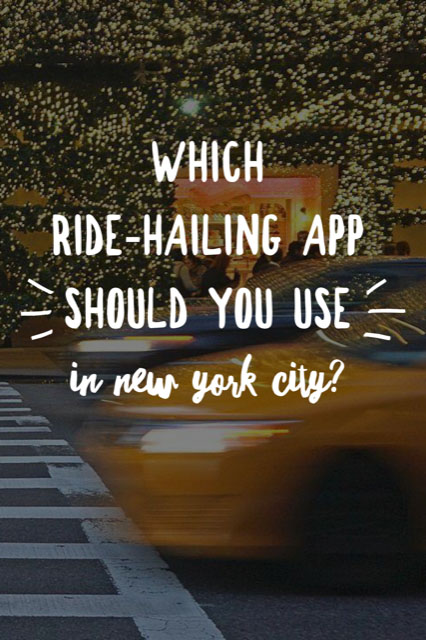Editor’s Note: We updated this article on January 17, 2018, after previous updates on October 21, 2016 and April 23, 2017. The ride-hailing app world is a fast moving one, and we’ve had some changes to report.
Navigating New York City has become a different beast in recent years—with the advent of Citibikes and Uber, all of a sudden options for getting from point A to point B have multiplied, especially in the outer boroughs.
And then, of course, Uber competitors have cropped up, and the taxi industry finally got the hint that it was time to innovate, meaning that now there are more apps to choose from than ever. Here’s our guide to the best apps for getting around the Big Apple…
Curb (formerly Way2Ride)
This app hails yellow taxis (or the newer green ones), which then show up at your location and wait up to four minutes for you to get in. Curb was once my app of choice, far more reliable than Uber and with none of the dreaded surge pricing nonsense, which means that when it’s raining during rush hour, you won’t spend your monthly rent getting to your destination. One driver told me that drivers get charged $10 for canceling a ride once they’ve accepted it, which would explain the reliability. These positives all still apply, however Curb now charges a “service fee” on each fare of $1.95 in addition to the fare, making shorter trips far less cost effective.
Juno
Juno is a competitor to Uber and Lyft with a mandate to treat its drivers better than the aforementioned. I haven’t noticed any difference in service since Gett acquired Juno in April 2017–service has remained the same, and Juno did not incorporate any of Gett’s unique offerings. The Juno drivers I’ve spoken with are still happier with the company than with Uber, even after filing a class action lawsuit when their promised equity in the company disappeared. From the passenger’s perspective, Juno is consistently cheaper than both Uber and Lyft, although fares seem to be creeping upward. For now, Juno retains its place as my number one choice.
Uber
Sure, Uber is the one that started it all, but it’s also the one known for its lack of regard for both customers, its drivers, and its full-time employees. In my experience, an Uber ride costs more than a cab covering the same route, and it always seems like when you need one the most, prices are surging out of control–although anecdotally, I’ve been getting hit with surge pricing less often recently. Uber is rarely my number one choice, but it’s worth having it set up on your phone just in case (and for use in other cities). In June 2017, Uber caved to pressure to add a tipping option to its app, although it is in no way made to feel obligatory. It’s also been busy sneaking in a slew of other charges, including for a long pickup and returning items left in the car by passengers.
Lyft
Lyft’s service is pretty similar to Uber’s, as is its pricing (lyft implemented a tipping option before Uber). The company is a little less forthcoming about when surge pricing goes into effect, but caps it at three times the normal rate, unlike Uber. Anecdotal evidence as well as a study or two show that Lyft treats its drivers better than does Uber. As for user experience, though, the two services are pretty tit for tat.
Gett
Gett acquired Juno in April 2017, and soon after, decided to go all in with Juno. In other words, Gett is no longer available in New York City. We’re leaving the rest of this paragraph here so you can know what went away, if you so wish: With it’s $10 flat rate for trips that start and end below 110th Street within Manhattan, this app is great for rides between Midtown, downtown, the Financial District and the Upper West and Upper East Sides. My friend Ashley, who is a frequent customer, told me that she chooses it over the other apps when in the outer boroughs because it doesn’t impose surge pricing and reliably gets a car to her. I’ve used it a couple of times between Brooklyn and Manhattan, and the price seems a little higher than other apps. That said, the price you’re quoted before the ride is the price you pay, unlike other apps which only offer a pre-ride estimate.
Arro
NYC taxis run on one of two computer systems, and Arro serves the one that Curb doesn’t. Consensus seems to be that so far, Curb is the superior option, both in terms of its technology and its reliability. However, I haven’t yet used Arro myself.
Via
Via was meant to offer only shared rides (a la UberPool), but has recently expanded into private rides, bringing it more in line with the other ride-hailing apps–although it’s far more confusing than any of the other options. All rides are now based on length, just like all the other apps, but you have to choose from the regular service, ViaExpress, Private Ride, Shared Taxi, or buy a weekly or monthly pass, to which different rules apply. Although its service area has expanded, Via still only serves Manhattan, Brooklyn, Long Island City in Queens, and the area airports. I’ve downloaded the app, but every time I’ve opened it to check on a ride, I end up going back to Juno. Personally, if I have to share a space with strangers, I may as well take the subway. And if I have to think this hard to figure out how to get to my destination, I’ll just stay home.
The Old-Fashioned Hail
In certain parts of the city, most notably Midtown during rush hour and places like the West Village and Lower East Side on weekend nights, the old hand-in-the-air technique can still prove the most successful one. Highly recommended when traffic looks jammed.
Karhoo
Karhoo shut down in late 2016 before even launching in NYC.









